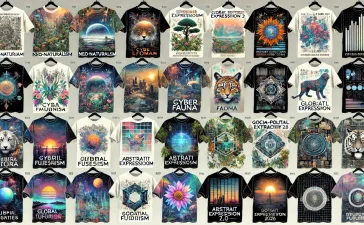- Clear Vision While freedom and flexibility are essential for fostering creativity, they must be balanced with a clear vision and set of goals. A well-defined mission statement and strategic objectives provide a guiding framework that aligns the creative efforts of the organization toward a common purpose.Consider the example of Pixar Animation Studios, whose mission is to “combine creative and technical artistry to create stories that inspire audiences of all ages.” This clear and concise mission statement serves as a North Star for Pixar’s creative endeavors, guiding everything from story development to animation techniques.
Moreover, clear goals provide employees with a sense of direction and purpose, motivating them to channel their creative energies toward tangible outcomes. Whether it’s launching a new product, reaching a specific audience, or solving a complex problem, well-defined goals serve as benchmarks for success and milestones for progress.
2. Clear Mission
A clear mission statement serves as the roadmap to your vision, defining how the organization will achieve its goals by addressing four key areas:
– Who are you? Clearly articulate the identity of your organization, including the values and principles that guide you.
– What business are we in? Define the core activities and services your organization provides, and specify the industry or market you serve.
– Who are our customers? Identify your target audience and explain who benefits from your services or products.
– What makes us unique? Highlight the aspects that set your organization apart from competitors and the unique value you offer.
3. Purpose Goals
Goals serve as the compass that guides a creative organization toward its desired destination. They provide clarity of purpose, define success criteria, and serve as a rallying point for the collective efforts of the team.
Setting concise, realistic, exciting, achievable, timely, orderly and reviewable (C.R.E.A.T.O.R) goals ensures that creative endeavors remain focused and aligned with the organization’s overarching vision. Whether it’s launching a new product, increasing market share, or enhancing customer satisfaction, goals provide a roadmap for navigating the complex terrain of creativity and innovation.
Moreover, goals create accountability and accountability fosters commitment. When individuals understand their role in achieving organizational goals, they are more likely to invest their time, energy, and creativity in pursuit of those goals. This shared sense of purpose and commitment galvanizes teams, driving them to push the boundaries of what’s possible and achieve extraordinary results.
4. Diverse Talent
The cornerstone of any creative organization lies in the diversity of its talent pool. Diversity encompasses a broad spectrum, including not only race, gender, and ethnicity but also a variety of backgrounds, experiences, skills, and perspectives. In a creative setting, this diversity serves as a catalyst for innovation, as different viewpoints intersect, collide, and ultimately converge to generate novel ideas and solutions.
Consider a design studio where graphic designers, writers, programmers, and marketing specialists collaborate on a project. Each team member brings a unique set of skills and experiences to the table, enriching the creative process with fresh insights and approaches. For example, a writer may offer a narrative perspective that sparks visual ideas for the designers, while a programmer’s understanding of user experience informs the project’s digital interface.
Moreover, diversity fosters a culture of inclusivity, where every voice is valued and heard. This not only enhances employee satisfaction and morale but also promotes a sense of belonging, encouraging individuals to contribute their best work.
5. Freedom to Experiment
Creativity thrives in an environment where experimentation is not only encouraged but celebrated. This entails providing employees with the autonomy and resources to explore new ideas, take calculated risks, and learn from both successes and failures.
Google’s famous “20% time” policy is a shining example of this principle in action. Under this policy, Google employees are encouraged to spend up to 20% of their workweek pursuing passion projects outside their primary responsibilities. This freedom to experiment has yielded some of Google’s most innovative products and features, including Gmail and Google News.
By empowering employees to follow their curiosity and explore uncharted territory, organizations can unearth hidden gems and breakthrough innovations that might otherwise remain undiscovered.
6. Adaptability and Flexibility
In today’s fast-paced and ever-evolving landscape, adaptability is essential for survival, let alone success. Creative organizations must be nimble and flexible, capable of responding quickly to changing market dynamics, emerging trends, and unforeseen challenges.
A prime example of adaptability in action is the shift to remote work prompted by the COVID-19 pandemic. Organizations that were able to pivot swiftly and seamlessly to remote operations demonstrated their ability to adapt to new circumstances and maintain productivity in the face of adversity.
Moreover, embracing flexibility means embracing experimentation and iteration as core principles of the creative process. By adopting an iterative approach to problem-solving, organizations can test hypotheses, gather feedback, and refine their ideas continuously, leading to more robust and innovative solutions.
7. Supportive Environment
Creativity flourishes in an environment where individuals feel supported, valued, and empowered to unleash their full potential. This involves fostering a culture of trust, respect, and psychological safety where employees feel comfortable taking risks, expressing themselves, and challenging the status quo.
One way organizations can cultivate a supportive environment is by providing ongoing training, mentorship, and professional development opportunities. By investing in their employees’ growth and skill development, organizations not only enhance individual performance but also nurture a culture of continuous learning and innovation.
Additionally, recognizing and rewarding creative contributions fosters a sense of appreciation and belonging among employees. Whether through formal accolades, bonuses, or simply words of encouragement, acknowledging and celebrating creativity reinforces its importance within the organization.
8. Open Communication
Open communication is the lifeblood of creativity within an organization. It involves more than just the exchange of ideas; it encompasses a culture of transparency, honesty, and active listening. In a creative environment, this means creating spaces and platforms where team members feel empowered to share their thoughts, feedback, and concerns freely.
A prime example of open communication in action is the concept of brainstorming sessions. These sessions provide a forum for team members to generate ideas collaboratively, bouncing concepts off one another and building upon each other’s contributions. By fostering an environment where no idea is too outlandish or off-limits, organizations can unlock the full creative potential of their teams.
Moreover, open communication extends beyond internal channels to include interactions with clients, stakeholders, and even competitors. By soliciting feedback and insights from external sources, organizations can gain valuable perspectives that enrich their creative output and enhance their competitive edge
In conclusion, the recipe for a great creative organization comprises a diverse talent pool, open communication, freedom to experiment, clear vision and goals, a supportive environment, adaptability and flexibility, and a steadfast commitment to achieving shared objectives. By cultivating these ingredients and nurturing a culture of creativity and innovation, organizations can unlock their full potential and thrive in today’s dynamic and competitive marketplace.
Want to learn more? We’re here to help you to take action, just like we’ve helped thousands of other entrepreneurs, business owners, and creative professionals all around the globe. Now is the time to let your passion SHINE. Now is the time to Make Tomorrow Today! To your success, Vinh Van Lam and Stuart Horrex Cofounders
ArtSHINE.com





